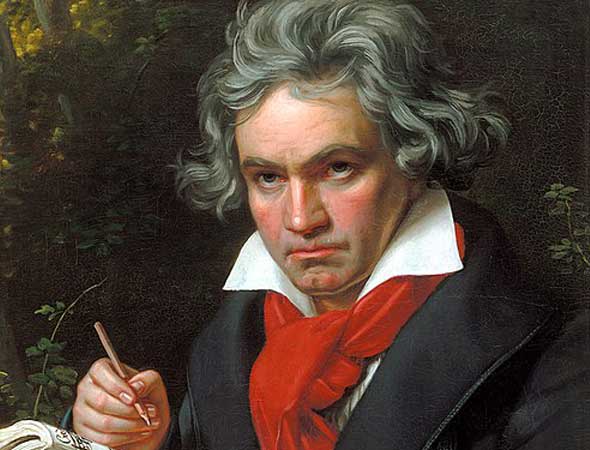BEETHOVEN: Romance No. 1 for Violin
Instrumentation: flute, 2 oboes, 2 bassoons; 2 horns; strings; percussion.
If you think of Beethoven as the ever-serious composer who often made things difficult for himself, challenging his players and his listeners, you’re in good company. But the Romance No. 1 in G for Violin and Orchestra will defy your expectations. While Beethoven sometimes wrote “against” the instrument, pushing the conventions of technique, his two lustrous violin romances are sometimes called “violinistic” — written to fit the traditions that violin soloists love.
That sense of comfortably fitting the instrument was not easily achieved, then or now. Like Mozart, Beethoven was himself a virtuoso instrumentalist (on the piano) who gravitated to Vienna for its culture of musical appreciation. In the late 1790s he was probably the city’s most eminent musical celebrity (Mozart had died in 1791). This time in Beethoven’s life is often called his “middle period,” and its compositions engage large-scale ideas in the symphonies and concertos. The romances show reveal him in a more relaxed vein. The Romance No. 2 was composed in 1798, four years earlier than the Romance No. 1, but was published four years later, in 1805, and bears a later opus number (50) than the G major’s number 40. His violin concerto would come later — in 1806. The romances date from the same period as The Creatures of Prometheus, an equally informal ballet score composed on commission.

Ludwig van Beethoven
Though Beethoven was coming to grips with his deafness and social isolation in these years, we cannot hear this in the luminous, sylvan qualities of the music he composed at the time, especially in the romances, Prometheus, and the second symphony. “I must confess that I am living a miserable life,” he wrote to a friend. “For almost two years I have ceased to attend any social functions, just because I find it impossible to say to people: I am deaf.” Yet the music seems to glow with a sense of optimism.











